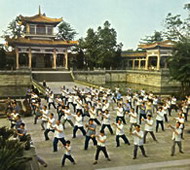|
About Complementary and Alternative Medicine (CAM) CPD and Best Practice
CAM CPD relates directly to CAM Best Practise and provides a useful structured way in which all practitioners can enhance their professionalism and gain valuable insights into for example CAM research skills and public relations abilities. CAM CPD involves useful reflection upon all areas of how you as a CAM practitioner relate to your clients, provide your services, develop through on-going research a greater understanding of your specialist subject and how it relates to other fields of CAM.
The Qi China International CPD CAM Best Practice course will not only provide you with at least 25 hours verified module and portfolio-based CPD, it will provide invaluable best practise guidance in such fields as effecive technical research, medical condition related health and safety, and a friendly and effective CAM 'Questions and Answers Surgery' facility.
With 30 years clinical practise and teaching experience in the Chinese therapeutic arts, course provider Dr Alan Tinnion will through the course modules share his invaluable knowledge, which spans current research project work with NHS university research teams.
Some general information about CPD Best Practice and lifelong learning activities that you will already be familiar with:
The list below is not fully comprehensive but is provides some general guidance purposes in constructing a CPD / lifelong learning journal (Course Module 8) that is an important part of the Qi China International CPD CAM Best Practice course. The main emphasis on completion of the journal is placed not upon types of activity engaged in, nor time spent on these, but upon reflective thinking about related relevant new ideas, experiences, and knowledge encountered through those activities
Characteristic Areas of CPD and Lifelong Learning activity:
-- In the workplace whilst seeing patients/clients
-- On the telephone, in e-mails or communication with colleagues
-- On the internet
-- Group settings, small informal meetings or large formal events
-- In the library and via CAM periodicals and general and specialist healh Journals
-- In formal / structured educational settings
|
